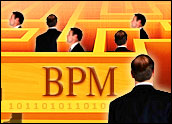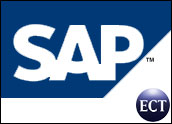
“Not to beat about the bush, but the budgeting process at most companies has to be the most ineffective practice in management. It sucks the energy, time, fun and big dreams out of an organization. In fact, when companies win, in most cases it is despite their budgets, not because of them.”
These are the words of Jack Welch, the former General Electric chairman, in his best-selling book, Winning. He is not alone. More and more CFOs at American companies are reaching the same conclusion.
As a result, they are following their European brethren in adopting rolling forecasts while moving away from the traditional budgeting process that many view as flawed and counterproductive.
As a technology consultant, I’ve installed software systems in Europe, where companies have been using rolling forecasts for more than a decade. When I worked as a consultant for a company in the UK, about 80 percent of my clients were doing rolling forecasts. When I first started working for a business performance management (BPM) solutions provider two years ago, maybe 15 percent of our clients were taking advantage of rolling forecasts.
That’s changing. I’d say just in the last year, as many as 70 percent of the North American companies we work with have asked about rolling forecasts and want to know if their BPM system can accommodate it.
With younger financial executives becoming more schooled in rolling forecasts, and more MBA programs focused on the advantages of rolling forecasts, this will only increase in the future.
One Version of Truth
Many CFOs have reached the conclusion that spreadsheets are not up to the task when it comes to implementing rolling forecasts. Multiple iterations with changing budget assumptions make spreadsheets difficult to control. Security of key financial data is problematical. The consolidation of results is cumbersome. And the risk of error is high.
As a result, many financial executives have been searching out BPM applications that automate data input, provide real-time data access, offer a variety of front-end user interface options, and allow the organization to grow with the business. Once they have integrated their disparate information systems to yield a “single version of the truth,” their BPM solution can serve up the complex, detailed data needed to move forward with rolling forecasts.
Then it becomes a question of the right software when it comes to implementing rolling forecasts on a number of different planning and budgeting software applications. I’ve found that using an open tool will allow an organization more flexibility in creating a rolling forecast. There is no set template you have to fit something into — instead, you create it.
Crossing Dimensions
The real issue with rolling forecasts is that most software applications are already prebuilt on some level, which means they are already configured for some time element, typically a budget cycle. A very robust tool set will allow applications to be used for rolling forecasts from the get go. With some applications, if you’re doing, say, a six-quarter rolling forecast, you’re continually crossing dimensions of year and month, so when printing out six quarters of a forecast you run the risk of crossing two years.
The way typical OLAP applications are set up years are a separate dimension from months. If the application is set in its way with those two dimensions, and many are, it becomes much more difficult to get the reporting required to support it and the other functionality needed.
It is also important with rolling forecasts that the software keep all the data in a single location. Many products have separate planning, reporting and budgeting applications and speak to each other in different ways. Ideally, you want one database that encompasses reporting, planning and budgeting, so it’s one set of numbers for everyone to use.
This makes it much easier to integrate rolling forecasts for revenue planning, or salary planning, or capital expense planning, with all the numbers coming from the same database and everything built in the same place. Compare this to having to roll in the revenue-planning piece, which may be a separate application or piece of software from the HR (human resources) piece, or the capital expense planning piece.
Culture Shock
More than anything, however, is the reality that rolling forecasts constitute a major cultural change for many businesses.
That’s been the biggest resistance, in my experience. People have to get away from the mindset of doing a monthly budgeting cycle, and the right tool supports a lot of utility in the rolling forecast to make that cultural change as easy as possible.
Typically, you have business managers who have been doing 12-month annual budgeting cycles for years and suddenly are asked to go to a rolling forecast. This is like learning to suddenly drive on the left side of the road after driving for years on the right side. As a result, you want a tool that is so flexible and simple that it eases this transition and tends to get more buy-in from different levels of the company much more quickly.
Emery Sinclair is a consultant with Revelwood, which is headquartered in Parsippany, NJ. He can be reached at[email protected].













































